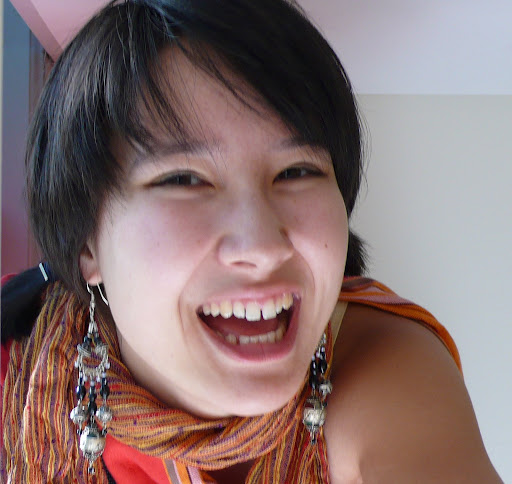Huiku Study Tour: Outtake 1
From the 17th till the 28th of November, I took the Huiku Trust board on a study tour through Ghanzi and Namibia to view other San community-run tourism projects.
TRIP SUMMARY:
We began the trip in Ghanzi, picking up the board members from their settlements and parking at the Bokamoso hostel in D'Kar for a couple of days. During that time we visited two Tholo Safaris camps, and I madly raced to finish the ADF quarterly report. Next we drove to the Dqae Qare game farm and spent two nights there, seeing the facilities and chatting with staff. Saturday morning we clicked off the safety and set out on a massive road trip through Namibia. To give you an idea, I covered almost 4000km over 10 days, on roads ranging from good-quality paved road to 4WD 10km/hr sand road.
In Namibia, we entered via the Mamuno gate, drove to Gobabis, and saw the Omaheke San Trust (2 nights). Then we drove to Windhoek, stayed one night in the Cardboard Box Backpacker's, and proceeded the next day to Tsintsabis Treesleeper Camp. Two nights in Tsintsabis, and then onwards to Tsumkwe and two nights at Tsumkwe Country Lodge in order to visit the Nyae-Nyae Conservancy. Then a gruelling one-day journey back to D'Kar through the Dobe gate, dropping off the board members, and finally returning to my house at 9:30PM. I woke up the next morning at 6:00AM to drive the rental car back to Maun.
OUTTAKE ONE:
We're driving through Nyae-Nyae Conservancy. This is an interesting and largely successful San community project in Tsumkwe, north-eastern Namibia: they have a large area that they manage as a conservancy, which has a healthy and diverse game population. They make most of their money off of the hunting quota, which is quite a good income; however, (in my opinion), they severely under-utilize the potential for photographic and other tourism income. They also mismanage the redistribution of benefits to the community. However, they do an excellent job of managing the conservancy, and they DO milk the hunting quota for all it's worth – they sell, for example, three or four elephant hunts a year, which bring in huge amounts of money. There was ample sign of elephants everywhere we went on the conservancy – with typical disregard for international borders, many of them cross Nyae-Nyae en route to the Okavango Delta.
Anyhow, we're driving through the conservancy. Half of the board members are in Car 1, with the guide. I'm driving, and we're in front. N is driving the second car with the other half of the board members. We've been driving in near-silence, watching the scenery pass by, when suddenly I hear some muttering in mixed Nharo and Setswana start up behind me. All I can really catch is the word “plastics,” meaning plastic grocery bags.
The place we stopped
Suddenly, the muttering cuts off, and K shouts “STOP THE CAR!” Obediently I stop, and everyone leaps out, plastic bags in their hands. The other car stops behind me, and within a few seconds the occupants of Car 2 are also running around brandishing plastic bags. I cannot figure out what is going on.
They spread out and then drop to the ground and begin carefully picking through the giant boluses of elephant dung scattered on the roadside. After somehow identifying the best parts, they chuck the dung into the plastic bags and avidly continue collecting.
“What are they doing?” I ask N, after a few moments, completely bamboozled by this mysterious behaviour.
“Oh!” he says, laughing. “This will make you very strong! You make a kind of soup, and bathe in it before sleeping. It is the belief of these people that it is a medicine, it will make you strong – when other people are trying to witch you, you do this thing with the dung, and then their witching you won't work.”
“Yes,” P adds, interrupting his cheerful dung-collecting, “this is very good medicine.”
So I watched and waited as they ran around collecting as much dung as possible, and learned that the careful sorting was to avoid any insects that have burrowed into the dung. Once they had about two bags each, as well as some twigs from a toothbrush bush (don't know it's English name, but it's a bush whose twigs can be used to brush your teeth – I tried it, but didn't like it very much), we all piled back into the cars and continued our tour. There was a visible glow of happiness and excitement on all of the board members after this episode; I guess it's a very highly-valued medicine in Ghanzi, where there are very very few elephants. I wonder if it's as prized in areas where elephants are common.





0 Comments:
Post a Comment
Subscribe to Post Comments [Atom]
<< Home